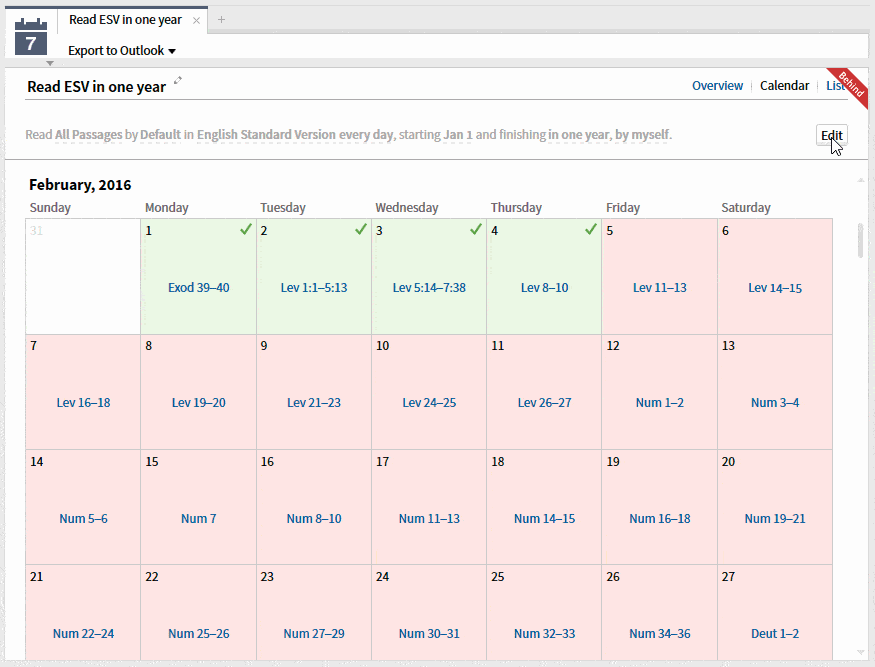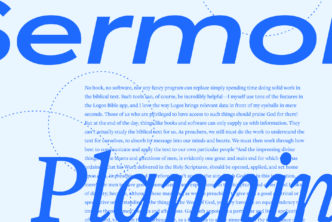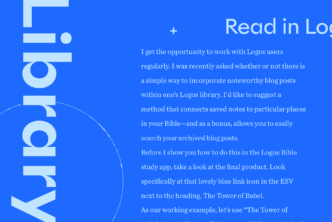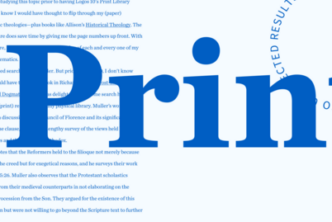Tell me if this sounds familiar: It’s December 31, and you think, “This is it. This is the year I will read the Bible all the way through.” You start strong through Genesis and Exodus. You power your way through the ritual laws in Leviticus and the censuses in Numbers. But by the time the regulations start repeating themselves in Deuteronomy, you find yourself lagging behind. At first you miss only a day or two, which you make up for on the weekend. But soon (perhaps right now?) you are weeks behind, discouraged of any hope of catching up, and you quietly let your plan to read the Bible lapse for another year.
If that’s you, let me offer you some encouragement, some tools, and some alternatives.
Make it manageable
When we find ourselves struggling in our Bible reading, it can help to pause, take a deep breath, and remember why we do this in the first place. Is it just a task on the Christian to-do list? The satisfaction of completing a personal challenge? No. Of course, it’s far more than that. The aims of making Scripture reading a habit include spiritual refreshment, raising our understanding of the Lord, and centering our thoughts on Him. And to do that, consistency is more important than pace.
To be consistent in our Bible study, we should set realistic goals. I use Logos to help me set manageable goals, but no matter how you do it, here are some questions you should ask yourself:
Do you need to read the Bible every day?
There is undeniable benefit to making your reading a daily discipline. But if you want to build some flexibility into your reading plan by changing “every day” to 5 or 6 days a week, that’s okay, too.
What about “in one year?”
Reading the Bible in 365 days is an ambitious, but ultimately arbitrary, time frame. Want to make it 2 years? Want to start before January 1? Sure. The main thing is not how soon we finish, but that we keep reading.
How do we deal with getting behind?
Don’t worry about it. Really. The purpose of your schedule is to help you read regularly. If you have missed some sessions, no amount of cramming will take you back in time to read on the days that you skipped; but that’s okay. Don’t let regret over past fumbles overshadow the benefit of your reading today.
One of the advantages of Logos is that you can create a custom reading plan and, when needed, adjust as you go. If you need help modifying your existing Logos reading plan, open the Documents menu, select your reading plan, and click the Edit button.
- Choose how often you will read by clicking the “every day” menu.
- Click on the “finishing” date menu, and select an end date. Logos will recalculate how much reading needs to be done each day to meet your revised goals.
- Since the sessions are now broken up differently, we’ll need to re-mark which passages you’ve read. Find your last reading, right-click, and choose “Catch up to here.”
- You may find you are already ahead of your new schedule! But if not, just work any missed readings into the rest of the plan. Right-click on today’s date, select “Adjust plan from here,” and Logos will redistribute all unread passages among the remaining sessions.
Finally, one of the best strategies for meeting any goal is to do it alongside others. Click on the last option, “by myself,” and change it to share the plan with one of your Faithlife Groups. You might already use Faithlife for your church or small group, or maybe you’ll want to create a small, private group to work through this reading plan with trusted accountability partners.
Make it interesting
Let’s face it: some parts of the Bible just seem . . . well, boring. I don’t know about you, but I always feel a little guilty admitting this. I mean, this is God’s Word, right? Shouldn’t it be the most inspiring thing I’ve ever read? But the fact is, the Bible was written in different times, places, and languages. Sometimes the exciting point of a passage would have been self-evident to the original audience, but the centuries have obscured the message from our modern eyes. If you think that might be happening in your own study, one of the best things you can do is get your hands on resources that peel back the layers of history to reveal those truly thrilling insights that can revive your reading.
Study guides like DIY Bible Study can identify themes in each book of the Bible, show the Bible’s personal relevance, and raise questions to guide you as you read the text.
A good study Bible like the free Faithlife Study Bible can help explain things in the text you don’t yet understand, with minimal distraction from your reading. Using the custom homepage layouts feature of Logos Now, I’ve set my reading plan to launch with my Bible and the FSB, right from the Reading Plan links on the Logos home page.
Make it completely different
Maybe—just maybe—this reading plan isn’t what you need right now. Reading through the entire Bible can be a default for those who want to study the Bible but don’t really know where to start. But depending on your needs this year, it may not be the best way. Perhaps you’ve read the Bible before, and you don’t quite see how it all fits together; or you’ve recently come to faith, and you need a framework for all the new things you are learning.
Instead of making your way through the trees of the Bible—painstakingly working verse by verse, chapter by chapter— maybe you should get a 50,000-foot view of the whole forest. The Bible covers a huge time span, and understanding the overarching narrative of Scripture will help illuminate any particular passage. Logos has a predefined reading plan just for this purpose: Open the Documents menu, new reading plan, predefined, and select “The Bible’s Story in 30 Days.”
Also, The Bible in Seven Acts is an upcoming work on this topic I’m really looking forward to. Another resource I found very helpful is The Story of Bible, Michael Goheen’s video course from Mobile Ed.
Getting a closer look
Maybe instead of a broad overview, you want to really unpack the meaning in a single book or passage, but you aren’t sure how to start. How do you identify the important words and ideas? How do you recognize and clarify the ancient cultural references? The free 10-day training from the Logos Pro team will teach you how to systematically study a biblical passage through observation, interpretation, and application. You’ve already shown a commitment to God’s Word; if you want to develop the skills to make your study richer, sign up below or learn more about this free training.






